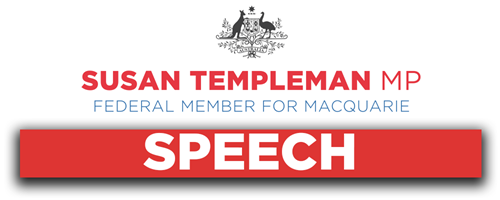
The Facts on Nuclear Energy
It wasn't a pleasant surprise for Blue Mountains residents and our Lithgow neighbours to learn that the coalition has selected their city as the site for a nuclear reactor. It defies logic that anyone would contemplate a nuclear reactor on the doorstep of the greater Blue Mountains World Heritage area. There was no consultation with the people of Lithgow, let alone their neighbours. In the vacuum of silence that the opposition have left on their 23rd energy policy—what will be built, how many will be built, how much it will cost, when it'll be ready, how much power it would provide—I'm going to offer some facts.
All the experts say nuclear energy is a bad idea for Australia. It's too slow and too expensive. Like international assessments, the CSIRO has found that the cheapest electricity comes from a grid that draws 90 per cent of its power from renewables, and it's close to half the cost of large nuclear reactors. We know that nuclear plays a role in some countries, but those countries all have an existing, mature nuclear industry and they have something else in common: poor renewable resources. Nuclear will never stack up in Australia because we have the world's best renewable resources, and we need to replace retiring coal urgently. We don't have time to wait another decade or more to bring new sources of energy into the grid.
Under their own optimistic scenario, the Liberals say they won't get their first nuclear reactor up and running until 2035-2037, risking 13 years of rolling blackouts as they abandon reliable renewables. And, if they did hit their 2037 target, it would be the fastest nuclear rollout in the world.
The waste is another problem. Unlike opposition claims about a can of Coke, it's actually about that much for every person the nuclear reactor is creating power for each year. So that's thousands of cans of Coke each year to be disposed of and, on average, around 30 tonnes of used fuel a year.
Let's just call this what it is: a clumsy attempt to slow down investment in renewables and undermine confidence in the energy transformation that is already underway. It's a policy that will stick people with higher energy costs for longer, and risk reliability. Australia's already halfway to meeting our 2030 emissions reduction target, with about 25 per cent more renewable energy in the national grid right now. We've doubled the approval of renewable projects, and coal and gas project approvals have fallen to a quarter of what they were. So this is what's actually happening in the real world, and it shows that the energy transition is underway. It's real, it's already happening and that's the way we make energy cheaper and greener.


